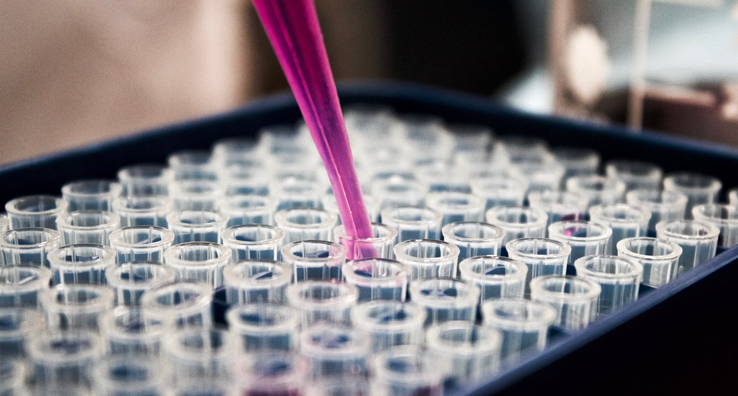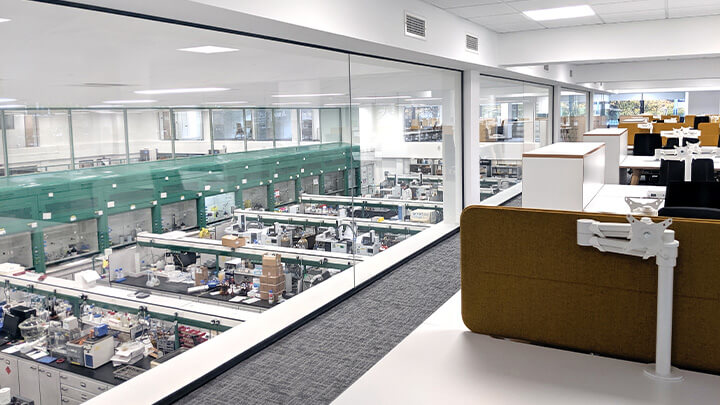ICH Q3D Guideline elemental impurity testing services for pharmaceuticals and toxicological risk assessment to support the implementation or maintenance of your elemental impurity programs
The ICH Q3D Guideline for pharmaceutical elemental impurities presents major challenges to testing and risk assessment within the pharmaceutical industry. These challenges are related to the requirement to meet current stringent limits for specific elements as drug product impurities, and to assess patient risk due to exposure to such impurities.
The ICH Q3D guidance promotes a risk-based approach to assessing the presence of elemental impurities in drug products, focused on the assessment of actual toxicological risk to the patient as it relates to the relevant route of administration for a given drug product. The Guideline includes three parts: the evaluation of the toxicity data for potential elemental impurities; the establishment of a Permitted Daily Exposure (PDE) value for each element of toxicological concern; and, the application of a risk-based approach to control elemental impurities. The current version of this document is the ICH Q3D(R1) adopted March 2019 which included revision of the cadmium inhalation Permitted Daily Exposure (PDE).
ICH Q3D Elemental Impurity Analysis Expertise
Our elemental impurities experts and toxicologists can help you to develop a compliance strategy to achieve successful implementation of ICH Q3D requirements. Intertek's GMP laboratory services teams facilitate the process through the design of tailored analytical programs based on wide experience of pharmaceutical impurity analysis and in-depth knowledge of elemental impurity testing and the ICH Q3D guideline, along with years of experience in conducting toxicological risk assessments. We can provide screening studies and data to aid risk assessment, if this does not already exist, or develop and validate methods tailored to the clients’ specific products.
Our laboratories utilise inductively coupled–optical emission spectroscopy (ICP-OES) and inductively coupled–mass spectrometry (ICP-MS) to perform elemental impurity testing in accordance with pharmacopoeial procedures (such as USP General Chapter <232> and Chapter <233>), or suitable alternative procedures. Our scientists are skilled in the selection of method preparation (including microwave digestions) and instrumentation based on your products sample matrix and the required limit of quantitation (LOQ). Our toxicologists evaluate the generated data and perform toxicological assessments to help you understand the potential risks to patients due to exposure to elemental impurities in your drug products, derive relevant PDE values for the impurities (where necessary), and prepare written reports that can be submitted to regulatory authorities as needed.
With nearly 30 years of experience in assessing elemental impurity contamination in drug substances, excipients, drug product manufacturing, and container closures, and with decades of experience in conducting toxicological risk assessments, our analytical scientists and toxicologists apply the right approaches for your samples. Our expertise can help you to address potential patient risks and overcome elemental impurity challenges through our cost effective and efficient services. Bringing quality and safety to life, we offer Total Quality Assurance expertise to help you to meet and exceed quality, safety and regulatory standards.
Pharmaceutical News & Events
- PRESS RELEASE: Lab expansion to enhance capabilities in inhaled biologics drug development
- PRESS RELEASE: Intertek partners with CrystecPharma to advance formulation science and accelerate development for dry powder inhalers
- NEW! Blog: Optimising Quality in Pharma Supply Chains
- Determination of Particles in Pharmaceuticals - Article
- Discover our Audit Live Tool for direct access to our scheduled audits
- Extractables/Leachables Lab Tour - Request access
- Medical Device Extractables & Leachables Studies
- Glycosylation Analytical Approaches for Antibody Therapeutics
- Rapid Determination of Low/Trace Level Benzene in Pharmaceutical Excipients and Finished Products

Pharmaceutical Laboratories
Intertek Pharmaceutical Services Manchester (UK)
Intertek Melbourn (UK)
Intertek Switzerland Analytical Laboratory (Basel, Switzerland)
Intertek Pharmaceutical Services (Whitehouse, NJ, USA)
GMP and CMC Laboratory Services, India (Mumbai, India)


Pharmaceutical News & Events
- PRESS RELEASE: Lab expansion to enhance capabilities in inhaled biologics drug development
- PRESS RELEASE: Intertek partners with CrystecPharma to advance formulation science and accelerate development for dry powder inhalers
- NEW! Blog: Optimising Quality in Pharma Supply Chains
- Determination of Particles in Pharmaceuticals - Article
- Discover our Audit Live Tool for direct access to our scheduled audits
- Extractables/Leachables Lab Tour - Request access
- Medical Device Extractables & Leachables Studies
- Glycosylation Analytical Approaches for Antibody Therapeutics
- Rapid Determination of Low/Trace Level Benzene in Pharmaceutical Excipients and Finished Products

Intertek Pharmaceutical Services Manchester
P.O. Box 42
Hexagon Tower
Blackley
Manchester, M9 8ZS
United Kingdom
For location use: M9 8GQ
Intertek Pharmaceutical Services
P.O. Box 470
291 Route 22 East
Salem Industrial Park
Whitehouse, NJ 08888
USA
Sample Size and Pricing Guide (PDF)
Download our Pharmaceutical Testing brochure (PDF)
Download our Intertek Pharmaceutical Services Brochure
Download our Custom Extractables and Leachables Solutions Brochure
